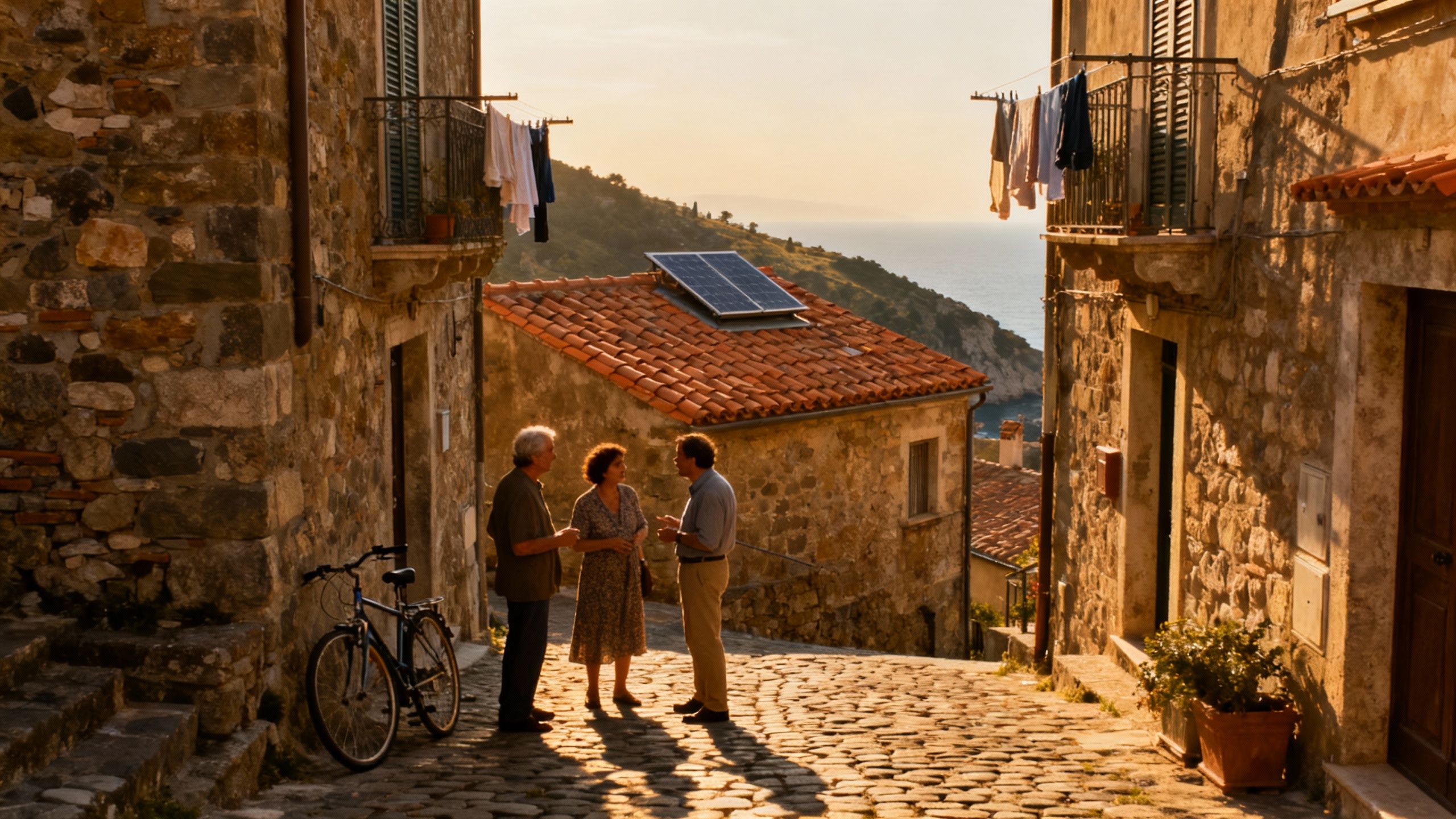Where France’s Verdant Coasts Hide Real Value
Fall for France’s green coasts — then buy with local data and stewardship in mind. Market divergence and ‘valeur verte’ make lifestyle choices also smart long‑term bets.
Imagine waking to gulls and granite cliffs, then walking five minutes to a farmers’ market spilling with wild mushrooms, cider and sea-salted cheeses. In France’s green coastal and forested belts — Brittany, Corsica’s pine-scented coves, the oak-lined Dordogne valleys and parts of the Var — daily life feels like a slow hymn to seasons, local craft and abundant landscape. But the landscape you fall for and the local property market you must understand are not always the same; subtle regional forces shape price, supply and the green credentials of homes.
Living the French verdant‑coast lifestyle

Morning routines here are outdoors: espresso at a sun-washed cafe in a village square, a walk along a hedged lane, a stop at the marché for seasonal produce. Streets smell of wet stone and wood smoke in autumn; salt and pine in summer. Communities are small but rich in rituals — oyster festivals on the Côte d’Armor, early-morning marchés in Saint‑Rémy, and communal bread ovens in rural hamlets. For international buyers who prize biodiversity, this is a place where home and habitat can be one.
Neighborhood spotlight: Brittany’s back lanes & port towns
Coastal towns like Concarneau and Roscoff stitch together working harbours, stone houses with slate roofs, and forested inland routes dotted with bike lanes. Locals buy shellfish at dawn; afternoons belong to sailing clubs and tide-pool explorers. Properties here range from compact granite cottages a short walk from the quay to low-density eco‑renovations tucked behind wind-sheltered hedgerows.
Food, markets and seasonal rhythms
Weekends are for marchés and seasonal rituals: truffle hunts inland, mussel festivals by the coast, and small winemakers opening cellars in the Rhône corridor. These rituals shape how properties are used — large kitchens for communal meals, shaded terraces for late‑summer dinners, and cellars for preserving harvests. For an eco‑minded buyer, local food networks also mean a shorter supply chain and lower food miles.
- Lifestyle highlights: real places and small pleasures
- Early-morning marché at Saint‑Germain‑en‑Laye (regional markets and producers)
- Sunset walks on Ploumanac’h’s pink granite coast (tidal life and coastal trails)
- Sunday aperitif on a shaded terrace in Aix-en-Provence or a vineyard guesthouse in Dordogne
Making the move: lifestyle needs meet market reality

The dream of a verdant coast or oak‑dotted valley must be married to market facts. National notaries reported roughly 780,000 transactions in the twelve months to September 2024 and a modest year-on-year dip in prices, while INSEE shows strong price divergence: dense, tourist or alpine areas remain pricey, rural corners can be far more affordable. That means your lifestyle wish — proximity to a market, a coastline, or a forest — will strongly influence price per square metre and resale dynamics. Planning with data keeps romance aligned with value.
Property styles: how architecture shapes daily life
Stone farmhouses with thick walls are cool in summer and snug in winter — ideal for those wanting thermal mass and low‑tech longevity. Coastal villas offer breezy living but need salt‑resistant finishes and thoughtful landscaping to resist erosion and storms. Modern eco‑renovations pair insulation, heat pumps and solar with reclaimed timber and living roofs: they cost more up front but reduce bills and maintain comfort across seasons.
Working with local experts who care about place
Choose agents who speak the language of local stewardship — those who know coastline setbacks, heritage protections, and which communes favour renewable installations. A local notaire will flag urban planning constraints; an architect experienced in heritage and passive design will judge what a shell can realistically become. These experts turn lifestyle ambitions (a wild garden, a green roof, natural pools) into deliverable projects.
- Practical-lifestyle checklist when visiting properties
- Check orientation and microclimate — south-facing terraces, prevailing winds and shelter from storms.
- Ask about local services by season — markets, medical access, and short‑term rental demand.
- Inspect water management — well, drainage, and permission for rainwater harvesting or greywater systems.
Insider knowledge: what expats wish they’d known
Expat buyers often arrive romantic and leave with a set of pragmatic truths: local bureaucracy is patient but precise, good neighbours matter more than a long view, and seasons rewrite a home’s strengths. For instance, a coastal home that dazzles in July may feel exposed in November storms. Understanding these rhythms is part of long-term stewardship — and it affects renovation choices, insurance, and how a property’s value evolves.
Cultural integration: language, community, and rites
Join local associations — bread-making circles, coastal clean-ups or market co-ops — to build trust quickly. Learning a few Breton or Provençal phrases and being present at village meetings pays back in quicker practical answers and invitations. For long-term joy, invest in small gestures: hosting a neighbourhood meal, or hiring local craftsmen for garden work.
Long-term lifestyle & practical considerations
Green features are increasingly measurable: Notaires work shows a ‘valeur verte’ for energy-efficient homes. For buyers who plan to live in a property, investing in insulation, efficient heating (air-source heat pumps), and modest solar often raises comfort and can protect resale value in regions where buyers prize low-energy living.
Conclusion: fall in love mindfully
Picture yourself gardening among holly and heather, joining a market queue at dawn and listening to a distant foghorn. If that image is what draws you to France’s verdant coasts and forests, guard it with due diligence: learn local seasonality, bring experts who care about ecological stewardship, and favour properties that already respect the land. When romance and rigor meet, you buy more than a house — you inherit a place to steward.
Norwegian market analyst who relocated from Oslo to Provence; guides investors with rigorous portfolio strategy and regional ecological value.


